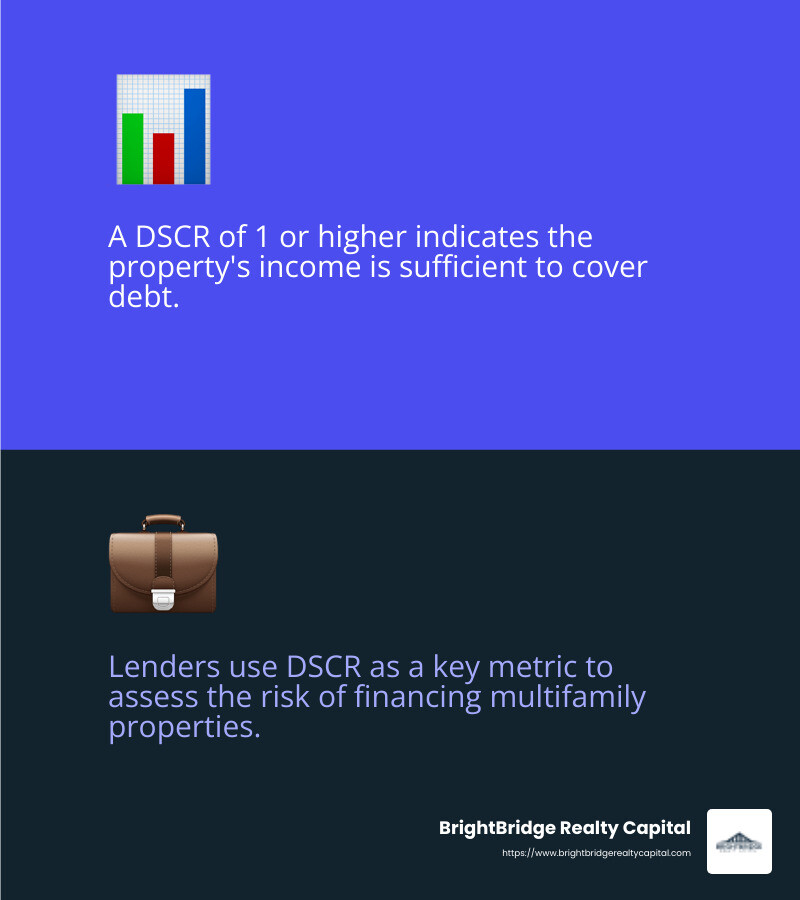The Multifamily Financing Playbook: From Loans to Leases

Multifamily property financing is a vital component in a real estate investor's toolkit, especially when seeking to grow and maintain a successful rental portfolio. At its core, multifamily finance involves obtaining the necessary funds to purchase, renovate, or construct properties that house multiple families under one roof. This type of financing opens doors to a wealth of investment opportunities, providing a steady stream of passive income and potential long-term appreciation.
- What is multifamily property financing? It's the process of securing funds for purchasing, renovating, or developing multi-unit properties.
- Why consider it? It offers competitive interest rates, longer loan terms, and the ability to leverage property value to maximize returns.
- Key strategies to focus on: Acquisition, refinancing, construction, and rehabilitation loans are popular ways to finance multifamily investments.
Multifamily finance strategies come in many forms, each designed to meet different investment needs. From acquisition and refinancing loans to construction and rehabilitation loans, investors can pursue a custom approach that aligns with their financial goals. Whether you're a seasoned investor or just starting, understanding multifamily financing options can significantly impact the success of your investment strategy. Our guide, "The Multifamily Financing Playbook: From Loans to Leases," aims to explain these options, setting you on a path toward a more strategic and successful investment journey.

Simple multifamily property financing word guide:
Types of Multifamily Financing
When diving into multifamily property financing, it's crucial to understand the variety of loan options available. Each type has unique benefits and requirements, making it essential to choose the one that best suits your investment strategy.
Conventional Loans
Conventional loans are the most common type of financing for multifamily properties. Offered by banks and financial institutions, these loans typically require a good credit score and a substantial down payment. They can be used for purchasing or refinancing existing properties and often feature either fixed or floating interest rates.
FHA Loans
FHA loans are insured by the Federal Housing Administration, making them attractive for borrowers who may not qualify for conventional loans. These loans offer longer terms and lower down payments, but they require the property to meet specific standards.
HUD Loans
HUD loans, including the popular HUD 223(f) and HUD 221(d)(4) programs, are government-insured and designed for both purchasing and rehabilitating multifamily properties. They offer competitive terms, like extended loan durations and lower interest rates, but can take longer to process.
Fannie Mae and Freddie Mac Loans
These government-sponsored entities provide liquidity to the mortgage market, offering competitive rates and flexible terms. They are ideal for borrowers with stable income and good credit, often facilitating the financing of larger multifamily properties.
Construction Loans
For those looking to build new multifamily properties, construction loans are a suitable choice. They cover the costs of construction and usually convert to permanent financing once the project is complete. However, they typically require a detailed project plan and a higher interest rate during the construction phase.
Bridge Loans
Bridge loans are short-term solutions used to "bridge" the gap between purchasing a property and securing long-term financing. They are useful for investors needing quick access to capital, though they come with higher interest rates and shorter terms.
CMBS Loans
Commercial Mortgage-Backed Securities (CMBS) loans are pooled into a trust and sold to investors as securities. These loans offer fixed interest rates and are non-recourse, but they involve complex structures and can have strict penalties for prepayment.
Hard Money Loans
Hard money loans are asset-based loans often used by investors who need quick financing or have less-than-perfect credit. While they offer fast approval and funding, they come with higher interest rates and shorter terms.
Understanding these multifamily financing options is key to making informed investment decisions. Selecting the right loan can significantly impact your project's success and financial outcome.
Qualifications for Multifamily Property Financing
Securing multifamily property financing involves meeting specific qualifications. Here’s what lenders typically look for:
Credit Score
A good credit score can open doors in multifamily financing. Many lenders prefer a minimum score of 620, but options exist for those with lower scores. A higher score often means better terms and lower interest rates.
Down Payment
Down payments for multifamily loans can vary. Conventional loans might require 20% or more, while other loan types like FHA loans may offer lower down payment options. The amount you put down can impact your loan-to-value ratio and, ultimately, your loan terms.
Income Ratios
Lenders assess your ability to repay by looking at income and debt ratios. A strong debt service coverage ratio (DSCR) is crucial. This ratio compares the property's cash flow to its debt obligations, helping lenders evaluate risk. Use a DSCR calculator to see where you stand.
Property Condition
The condition of the property is a major factor in the financing process. Lenders want assurance that the property will generate enough income to support the loan. Properties in good condition with strong income potential are more likely to secure favorable financing terms.

Meeting these qualifications can make the difference between securing financing or facing problems. Each aspect plays a role in shaping the terms and conditions of your loan. As you prepare, be thorough in evaluating your financial standing and the condition of the property to ensure a smooth financing process.
Next, we'll dive into key considerations for multifamily financing, including loan amounts, interest rates, and more.
Key Considerations for Multifamily Financing
When it comes to multifamily property financing, several key factors can influence your loan terms and overall investment strategy. Let's break down the essential considerations you need to keep in mind.
Loan Amount
First up is the loan amount. This is the total amount of money you're borrowing. It's influenced by the property's value and your financial qualifications. Lenders typically set a limit based on either the loan-to-value (LTV) ratio or debt service coverage ratio (DSCR).
Loan-to-Value (LTV)
The LTV ratio is critical. It compares the loan amount to the property's value. A higher LTV means more risk for the lender, which might lead to higher interest rates or stricter terms. Different loans have varying LTV allowances, so it's wise to shop around.
Debt Service Coverage Ratio (DSCR)
The DSCR measures the property's cash flow against its debt obligations. A DSCR of 1 or higher indicates that the property generates enough income to cover the debt. This ratio is a key metric for lenders to assess risk. 
Interest Rates
Interest rates are a big deal. They impact how much you'll pay over the life of the loan. Rates can vary based on market conditions, loan type, and your financial profile. Always compare rates from different lenders to find the best deal.
Loan Terms
The term of your loan affects your monthly payments and the total interest paid. Multifamily loans typically range from 5 to 30 years. Longer terms might mean lower monthly payments but more interest over time.
Prepayment Penalties
Some loans come with prepayment penalties. These fees apply if you pay off your loan early. Common penalties include step-down penalties and yield maintenance. Consider these when planning your exit strategy.
Closing Costs
Closing costs can add up quickly. They include fees for appraisals, origination, and more. Be sure to budget for these expenses upfront to avoid surprises.
Property Location
Location matters. Properties in desirable areas might qualify for better terms. Some locations may also offer specific programs or incentives, so do your research.
Recourse
Recourse refers to the lender's ability to pursue your personal assets if you default on the loan. Non-recourse loans limit the lender to the property itself. This can be an important factor in risk management.
Property Type
Finally, the type of property you're financing can influence your loan options. Multifamily properties with five or more units are common targets for these loans. Different types of properties might have different financing structures.
Understanding these key considerations will help you steer the multifamily financing landscape with confidence. Up next, we'll explore various financing strategies to help you achieve your investment goals.
Multifamily Property Financing Strategies
When it comes to multifamily property financing, choosing the right strategy is crucial. Let's explore some common financing options: acquisition loans, refinancing loans, construction loans, rehabilitation loans, and mezzanine loans.
Acquisition Loans
Acquisition loans are designed for purchasing multifamily properties. They can be long-term or short-term, like bridge loans. A bridge loan is ideal if you're buying a property to flip or if the property isn't fully leased yet. These short-term loans help you secure a property quickly before permanent financing is in place.
Example: Consider a scenario where you're eyeing a newly built apartment complex that's only half-leased. A bridge loan would allow you to acquire it swiftly while you work on securing longer-term financing.
Refinancing Loans
Refinancing loans replace existing debt on a property. There are several reasons to refinance:
- Better Rates: Lock in a lower interest rate if market rates have fallen.
- Improved Property Performance: If you've increased occupancy rates or value, you might qualify for better terms.
- Maturing Loans: Avoid balloon payments by refinancing before a loan matures.
Example: Imagine you bought a property with a 50% occupancy rate. Once you increase it to 90%, refinancing could offer more favorable terms, reflecting the property's improved stability.
Construction Loans
Construction loans finance the building of new multifamily properties. They are typically short-term and interest-only. However, some options, like HUD 221(d)(4) loans, offer up to 43 years at a fixed rate, which is attractive for developers.
Example: You're planning to build a new apartment complex. A construction loan provides the necessary funds to get started, and once the building is complete, you can transition to permanent financing.
Rehabilitation Loans
If your property needs a facelift, rehabilitation loans are the way to go. These loans provide the capital needed for renovations. They can be short-term like construction loans or longer-term, depending on the scope of work.
Example: A Fannie Mae Moderate Rehabilitation Loan offers terms ranging from five to 30 years, giving you flexibility based on your renovation timeline and budget.
Mezzanine Loans
Mezzanine loans are a creative way to increase leverage. They "top up" the primary loan amount, allowing you to reach higher loan-to-value ratios. These loans are often used in conjunction with other financing types.
Example: You have a $2 million loan on a $3 million property. A mezzanine loan could provide an additional $400,000, boosting your leverage and potentially increasing your return on investment.
These strategies offer various paths to achieve your multifamily investment goals. Each option has its own benefits and considerations, so align your choice with your financial strategy and property needs.
Frequently Asked Questions about Multifamily Property Financing
What are the benefits of multifamily financing?
Multifamily financing offers several key advantages for investors. One of the most significant is the potential for better interest rates. Because multifamily properties are often seen as lower risk compared to other commercial real estate sectors, lenders typically offer more favorable rates. This can result in substantial savings over the life of a loan.
Another benefit is the availability of longer terms. While many loans range from five to ten years, options like HUD loans can offer terms that extend up to 40 years. This provides stability and predictability for long-term financial planning.
Flexible terms are also a hallmark of multifamily financing. With a wide range of loan products available, investors can often find terms that align with their specific needs. Whether you need a short-term bridge loan or a long-term permanent loan, there's likely a product that fits your strategy.
Finally, multifamily financing typically allows for higher leverage. This means you can finance a larger portion of the property's value, which can be particularly advantageous when you're looking to maximize your investment returns.
What are the risks associated with multifamily financing?
Despite the benefits, there are risks to be aware of. Prepayment penalties can be a significant concern. These penalties are fees charged if you pay off the loan early, which can limit your financial flexibility. For instance, if you find a better refinancing opportunity, a hefty prepayment penalty might negate the benefits of switching loans.
Additionally, some multifamily loans require reserves. This means you must keep a certain amount of cash on hand for property repairs or other expenses. While maintaining reserves is a prudent practice, it can tie up capital that might otherwise be used for other investments.
What are the current trends in multifamily financing?
Interest rates are a hot topic in multifamily financing. Recently, we've seen a period of rising rates, which has affected borrowing costs. However, multifamily properties still benefit from relatively lower rates compared to other commercial sectors due to their perceived lower risk.
Another trend is the tightening of underwriting standards. Lenders are becoming more cautious, requiring higher credit scores and more thorough documentation. This reflects a broader trend towards risk management in the face of economic uncertainties.
In terms of loan products, there's a growing interest in flexible financing options that can adapt to changing market conditions. Investors are seeking loans that offer features like adjustable rates or options to convert from short-term to long-term financing.
These trends highlight the importance of staying informed and adaptable in your multifamily investment strategy. By understanding both the benefits and risks, as well as keeping an eye on market trends, you can make more informed decisions about your financing options.
Conclusion
In multifamily property financing, having the right partner can make all the difference. At BrightBridge Realty Capital, we specialize in offering customized solutions that cater to the unique needs of each investor. Whether you're acquiring new properties, refinancing existing ones, or starting on construction projects, our comprehensive suite of financing options is designed to support your goals.
One of the standout features of our service is our ability to close deals fast. We understand that time is often of the essence in real estate transactions, and our streamlined process allows us to close within a week. This quick turnaround time ensures that you can seize opportunities as they arise, without unnecessary delays.
Moreover, we pride ourselves on offering competitive rates. As direct lenders, we eliminate the middleman, which means we can pass on the savings to you. Our competitive rates are hard to beat and can significantly improve your investment returns over time.
BrightBridge Realty Capital is committed to helping you steer the complexities of multifamily financing with ease and confidence. Our team of experts is here to guide you every step of the way, ensuring that your financing aligns perfectly with your investment strategy.
For more information about our services and how we can assist with your multifamily financing needs, visit BrightBridge Realty Capital. Let us help you bridge the gap to your next real estate success.


